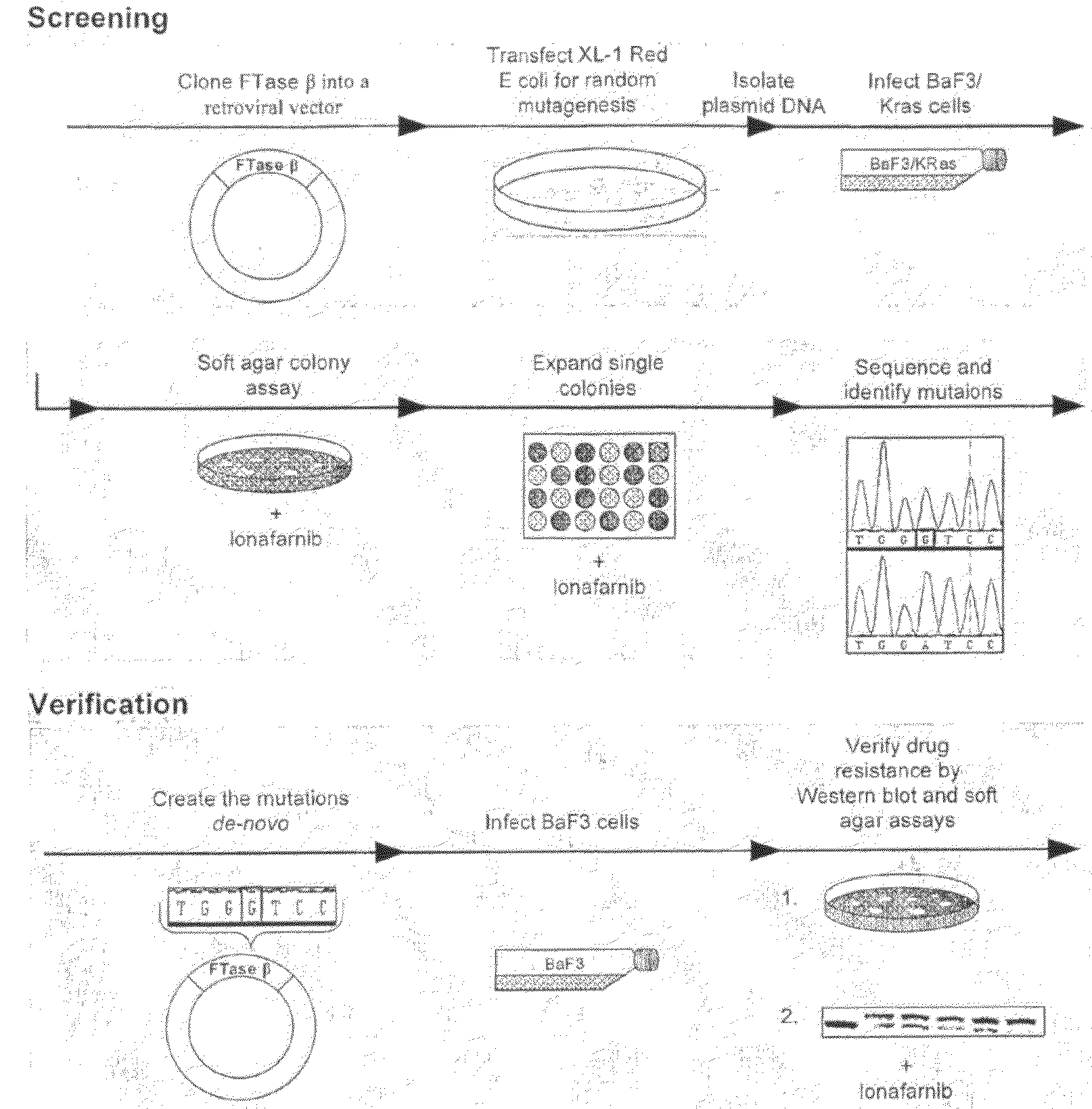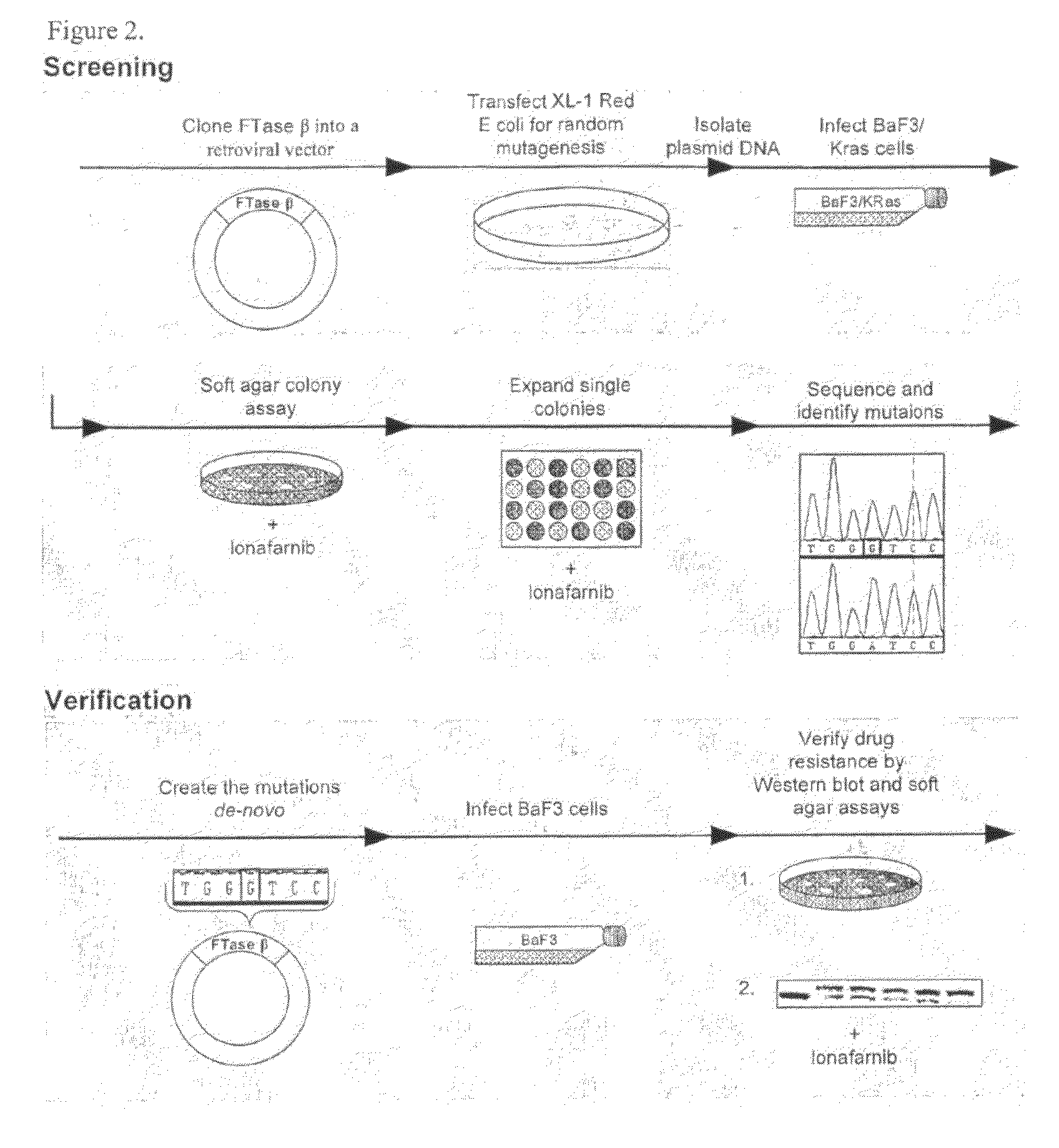Methods for the Treatment of Disease
a disease and treatment method technology, applied in the field of disease treatment methods, can solve the problems of limited cancer treatment options, and failure to provide an absolute guarantee of success
- Summary
- Abstract
- Description
- Claims
- Application Information
AI Technical Summary
Benefits of technology
Problems solved by technology
Method used
Image
Examples
example 1
Methods
Plasmids
[0099]The beta subunit of FTase was cloned into the ecoR1 sites of the pEYK3.1 retroviral vector22 generating pEYK-FTB for the random mutagenesis, and into the EcoR1 sites of the pBabe retroviral vector23 generating pBABE-FTB for verification of resistance by de-novo mutation generation. K-Ras61L (a constitutively active form of K-Ras containing a substitution of glutamine to leucine at position 61) was cloned into the EcoR1 sites of the MSCV-IRES-GFP retroviral vector.
Cell Lines
[0100]BaF3 cells are a murine 1L3 dependent cell line which can be made IL3 independent by the expression of certain oncogenes such as KRas-61L. We found that the BaF3-IKRas-61L cells grown in the absence of IL3 had increased sensitivity to lonafarnib as compared with BaF3 cells grown in the presence of IL3.
[0101]Random Mutagenesis
[0102]pEYK-FTB plasmid was used to transform XL-1 Red E. Coli according to manufacturer's directions (Stratagene). Cells were plated on zeocin agar plates and incuba...
PUM
| Property | Measurement | Unit |
|---|---|---|
| temperatures | aaaaa | aaaaa |
| temperatures | aaaaa | aaaaa |
| temperatures | aaaaa | aaaaa |
Abstract
Description
Claims
Application Information
 Login to View More
Login to View More - R&D
- Intellectual Property
- Life Sciences
- Materials
- Tech Scout
- Unparalleled Data Quality
- Higher Quality Content
- 60% Fewer Hallucinations
Browse by: Latest US Patents, China's latest patents, Technical Efficacy Thesaurus, Application Domain, Technology Topic, Popular Technical Reports.
© 2025 PatSnap. All rights reserved.Legal|Privacy policy|Modern Slavery Act Transparency Statement|Sitemap|About US| Contact US: help@patsnap.com



